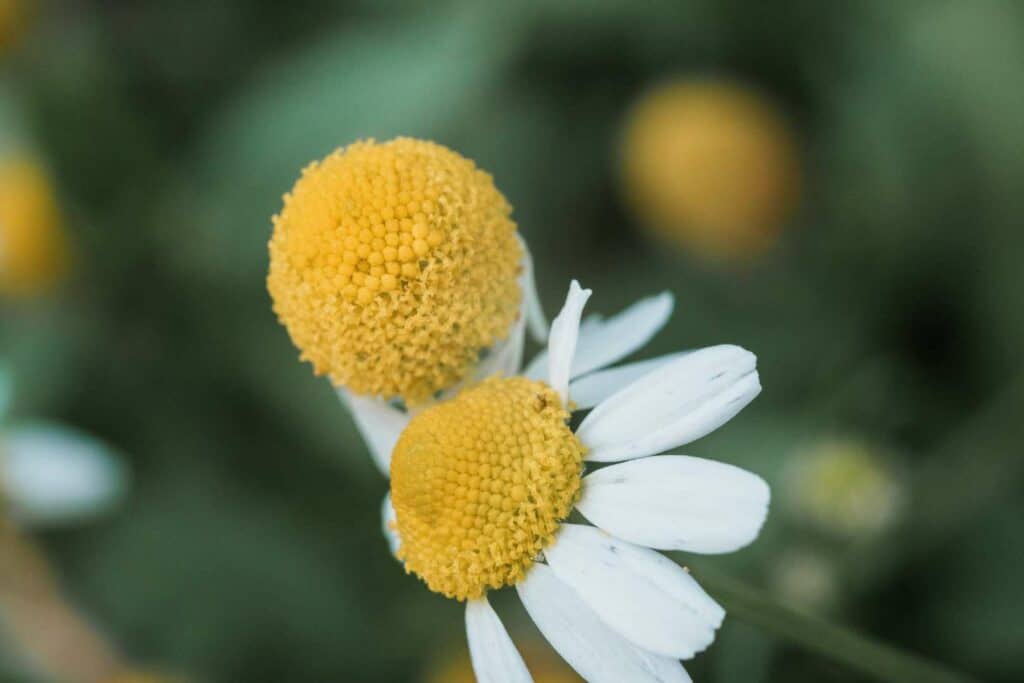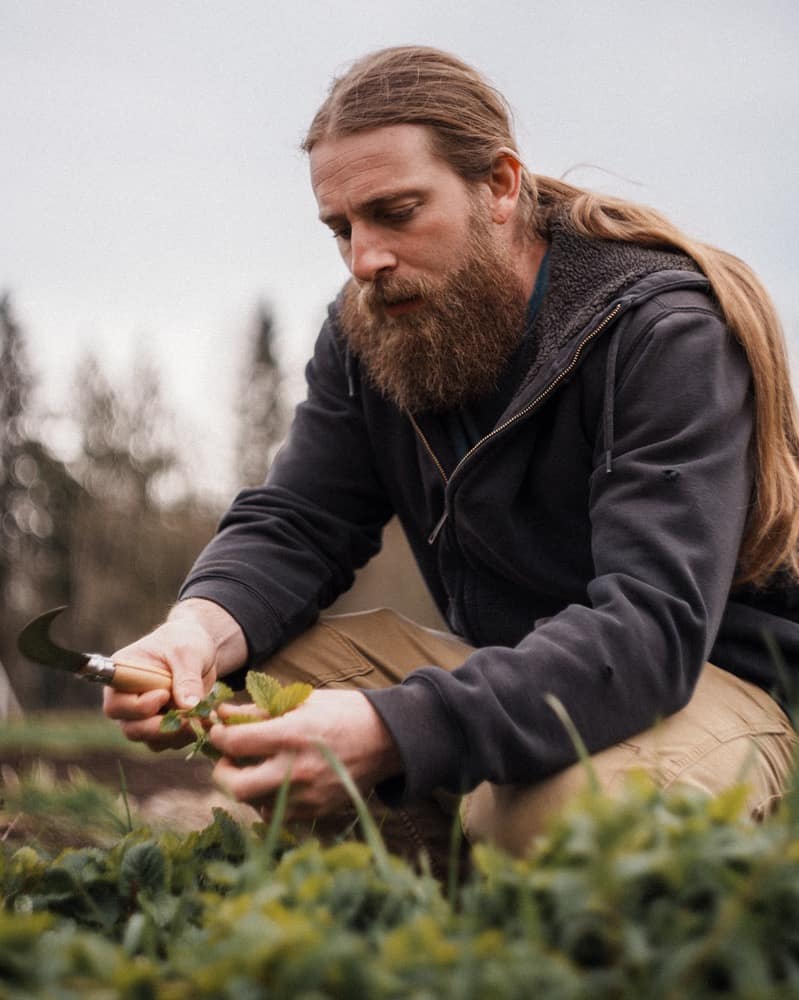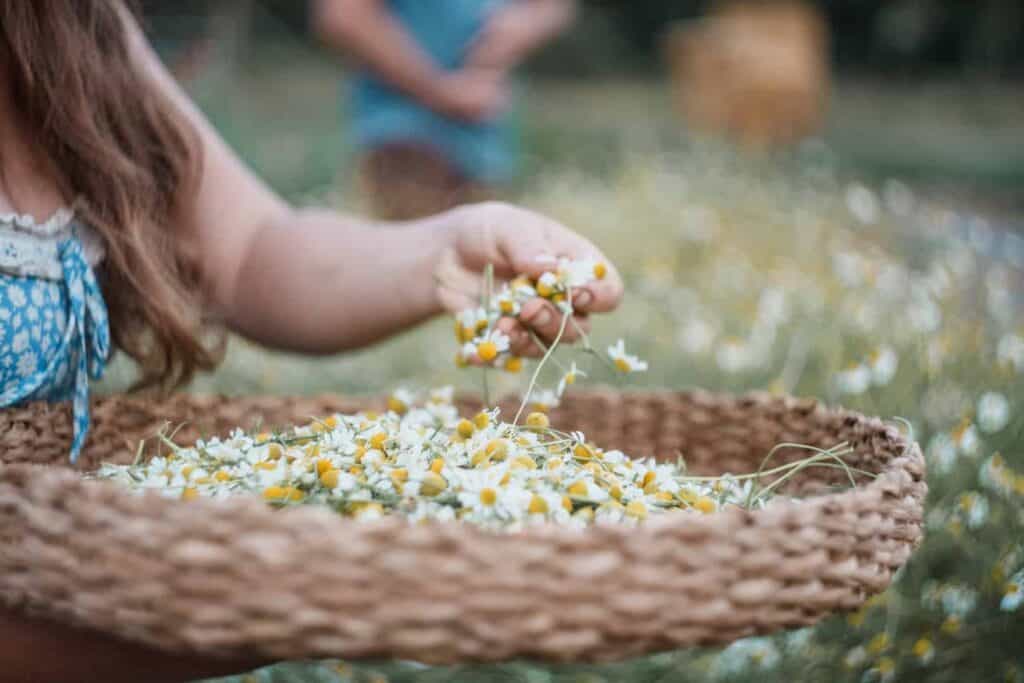All herbalists have one fear in common, and that’s accidentally causing harm to someone using herbs. However, the likelihood of this occurring is lower than you might think. By understanding the pathways in which herbs affect the body, you can practice with greater safety and confidence.
In today’s blog post, you’ll learn:
- How herbs affect the body physiologically and energetically
- Safety practices for microdosing herbs
- About the importance of follow-ups and receiving feedback
- Strategies for preventing herb-drug interactions
- How to use herbalism as an adjunctive therapy when tapering off medication
Have you ever considered that the number one goal and fear of herbalists are two sides of the same coin?
All herbalists share the intention of healing and supporting people by using herbal remedies. However, this very desire can lead them to the fear of causing harm as well.
This gives rise to the question, “How likely are you to harm someone’s health using herbs?”
It’s an excellent question, and by understanding the pathways in which herbs affect the body, you can practice with greater safety and confidence.
The Two Pathways of Herbalism
There are a few different orientations you can take when assessing how an herbal remedy might affect the body. Two of the most common paradigms include the physiological and energetic lens.
Physiologically and Biomedically
Herbs possess medicinal constituents that travel throughout the body and work on internal biochemistry, thereby adjusting its physiological processes. For example, bitter herbs, such as Gentian root (Gentiana lutea), cause the gallbladder to secrete more bile, which aids in the digestion and assimilation of fatty foods.
The physiological and biochemical properties of plants are easily ascertained through understanding the medicinal actions of their common constituents. For example, many plants contain tannins, which provide astringency, volatile oils, which are dispersive, and saponins, which assist in lowering cholesterol and are often stimulant expectorants.
Through understanding the medical actions associated with the constituents, you can discern how each plant will affect the physiology of the body when ingested.

Energetically
Energetics refers to how herbs adjust the ecosystem of the body by influencing its tissue state. When selecting herbs within the energetic paradigm, the primary factors assessed include their temperature (warming or cooling), toning action (relaxing or constricting), and moisture (drying or moistening).
Oftentimes, herbs that are incompatible with one’s constitution are chosen due to overlooking the energetic factors. To illustrate, if your client has a condition associated with a hot tissue state, using pungent and warming herbs such as Cayenne (Capsicum annuum), Thyme (Thymus vulgaris), and Oregano (Origanum vulgare) may not be the best choices.
Although they assist in modulating inflammation, their warming effects may aggravate the underlying condition further. In this case, using cooling and soothing herbs such as Marshmallow (Althaea officinalis) and Slippery Elm (Ulmus fulva) might be better indicated, especially if there’s accompanying dryness.
Microdosing Herbs
What’s the difference between Chamomile (Matricaria chamomilla) and Pulsatilla (Pulsatilla vulgaris)?
Chamomile is an herb you can ingest in large quantities. Whether you concoct a delicious syrup to add to your coffee, tincture the herb, or drink it by the mug, it’s an extremely safe herb you can use in rather large quantities without fear of harmful side effects.
Unlike Chamomile, Pulsatilla is a microdosing herb or low dose botanical. This means that you need to exercise greater caution when administering the herb and work within a smaller dosing range. While you might add tinctures of Lemon Balm (Melissa officinalis) or Catnip (Nepeta cataria) to your water by the dropperful, the dosage range for microdosing herbs often moves between one and four drops.
Microdosing herbs such as Lobelia (Lobelia inflata), Pokeweed (Phytolacca decandra), and Pulsatilla are powerful medicines that have been traditionally used in the Western Materia Medica for centuries. However, they require you to exercise greater caution than you might with the average herbs found in your kitchen cupboards.
This doesn’t mean that you should feel afraid of using them in your practice, but it does mean you should use them more carefully. Here are some safety recommendations for working with microdosing herbs:
- Begin with one drop, and increase to as needed, making sure not to exceed the recommended daily usage (which differs from plant to plant).
- Combine the remedy with a large cup of water and drink instead of administering it directly on the tongue.
- Ingest the remedy after you’ve eaten something rather than taking it on an empty stomach.
- If you take the herb for an extended period of time, consider giving yourself breaks such as taking it every other day.
- Try taking a microdosing herb via tincture instead of an infusion or decoction. Although herbal potency can differ from season to season, tinctures produce consistent results that can easily be measured by drops.
- Always make sure that you know the strength ratio of your low-dose herb tincture preparations. Is it a 1:5? 1:10? 1:2? Make sure you know this so you can properly calculate your dosage.
Microdosing herbs can serve as a powerful conduit for healing. Instead of avoiding them, familiarize yourself with the ones you’d like to work within your practice and follow the safety guidelines above. Moreover, remain in tune with yourself while working with these herbs. How are they making you feel, and how is your body responding? Simple questions like these can help you ascertain when it’s time to increase or dial back on specific remedies.
One final note on low dose herbs, some can be extremely dangerous and should really only be used by people that are well trained in how to use them clinically. Otherwise, they can result in serious health complications or even death. The main category of herbs here would be plants that contain cardiac glycosides, such as Foxglove (Digitalis purpurea) or Lilly of the Valley (Convallaria majalis), and herbs that contain tropane alkaloids, such as Belladonna (Atropa belladonna) or Henbane (Hyoscyamus niger).
Meet the Teacher
You’ll encounter an unexpected teacher while on your herbal journey: Feedback.
Although you might consider the remedy you suggest to someone as marking the end of your assessment period, it’s only the start! How your client responds to the medicine provides you with further insight that will assist you in selecting a remedy that offers optimal support. I’m going to rephrase that to make sure you got it, cause this is a super important piece. When you give someone a remedy, the way in which they react or respond to it is a part of your assessment process.
It’s impossible to ascertain the correct remedy every time you work with someone new. There will be times where your remedies don’t work as planned, or even cause further discomfort. In these moments, it’s important to remember that your error does not define your competency, but rather, leads you to further growth as an herbalist.
Have You Followed Up?
Follow-ups are crucial. Without them, how will you know whether the herbs you’ve suggested are working or not?
Conducting follow-ups relatively close to initial consultations is important since they provide you with immediate feedback about how your client responded to the formula. With this information, you can adjust their herbal protocol as needed.
Oftentimes adjustments need to be made to formulas if the herbs are ill-suited for one’s constitution. For example, if your client has a dry or cold constitution, using herbs such as Yarrow (Achillea millefolium), Agrimony (Agrimonia spp.), and Mugwort (Artemisia vulgaris) can further exacerbate their dry tissue state.
A constitutional aggravation is unlikely to develop into a major pathology or disease in a short window of time. However, it can lead to uncomfortable or aggravated symptoms. Luckily, you can correct these mistakes relatively quickly by adjusting the formula to better suit their needs. In the case of excess dryness exacerbated with a drying formula, moistening herbs, such as Marshmallow (Althea officinalis) and Licorice (Glycyrrhiza glabra), can assist in moistening the formula and tissue state.
In some cases, the herbal remedies you’ve selected are well suited for your client. However, due to herb-drug interactions, uncomfortable side effects arise. Luckily, there are several easy steps you can take to prevent this.

Herb-Drug Interactions
Let’s face it.
A lot of people today take prescription medications. Consequently, it’s imperative to be well informed of herb-drug interaction so that the remedies you choose do not interact with their medications.
There are three main strategies you can employ to ensure that the herbs you suggest are compatible with your client’s medication. Remember these are generalizations and there are likely exceptions to these rules:…
- Avoid herbs that possess opposing qualities of the medication: If your client has hypotension and is taking medication to raise blood pressure, using herbs that assist in lowering blood pressure, such as Hawthorn (Crataegus spp.), oppose the therapeutic action of the medication and therefore are generally contraindicated.
- Avoid herbs that potentiate the medication: Taking herbs with similar biochemical actions to a medication can potentiate the drug’s effects. For example, combining blood thinning herbs such as Ginkgo (Ginkgo biloba) with a blood-thinning medication can cause the blood to become too thin. Another example is combining anxiolytic herbs like Kava (Piper methysticum) with benzodiazepines. That being said, this is a strategy many naturopaths and clinical herbalists use (while of course being in contact with their primary physician) to help reduce the dosage of a drug or eliminate it all together.
- Avoid herbs that mediate the cytochrome P450 detoxification pathway: Some herbs such as St. John’s Wort (Hypericum perforatum) are known to interfere with a lot of medication. This is largely due to its interaction with the liver, which encourages it to metabolize drugs faster than intended. If your client is taking medication, it’s best to avoid herbs that affect liver metabolism as it may disrupt how long it stays in circulation and thus has it’s effects.
It would be nearly impossible to memorize every single medication available on the market and their potential interactions with herbs, especially as new drugs are continually introduced. Keeping a book on hand that lists common medications and their interactions with herbs can assist you in choosing herbs that are compatible with your client’s current medication intake.
A few good books on the subject include Herb, Nutrient, and Drug Interactions: Clinical Implications and Therapeutic Strategies by Mitchell Stargrove and Johnathan Treasure and Herbal Contraindications and Drug Interactions: Plus Herbal Adjuncts with Medicines, 4th Edition, by Francis Brinker. They’re a little pricey, but indispensable books for the practicing herbalist.
Regardless of the herbs and medications you or your client is taking, another simple practice to avoid interactions, especially in the case of mucilaginous herbs, is to take them several hours apart from each other.

Tapering Off
Many folks are worried about causing harm through using herbal remedies. However, it’s prudent to note that side effects occur far more often in the case of prescription medications.
If you’re feeling unwell and are currently taking medication, it can be helpful to compare and contrast the symptoms you’re experiencing with the side effects associated with the drug you’re taking. If you notice a significant overlap, you can speak with your doctor about adjusting the dose.
One perspective shared amongst herbalists is that taking herbs with similar biochemical actions to your medication can be used in the gradual process of lowering your dose or tapering off. This process should always be overlooked by and completed with your doctor, and preferably one who is open to herbal medicine.
It’s important to remember that you’re effectively hiring the doctor you choose to see. If your physician isn’t able to work within your paradigm of health, you have the agency to select a new doctor who is open to collaborating with your vision for health. If your goal is to wean off medication, there are physicians who specialize in this.
The Best of Both Worlds
It’s understandable why you’d feel nervous about harming someone with plant medicine, and it’s precisely this care that makes you a diligent herbalist. However, the fear of this occurring is far larger than the likelihood of it happening. It is rare for herbalists to seriously harm their clients if they are using mild to moderate strength herbs and know how to use them properly.
Most plants in the Western materia medica are powerful yet gentle on the body. They work harmoniously with the subtleties that exist within the energetic frame and physiological processes.
Used wisely, they can serve as powerful agents leading you to vibrant health – no side effects necessary.
The post First Do No Harm: The Herbalist’s Edition appeared first on The School of Evolutionary Herbalism.




Leave a Reply